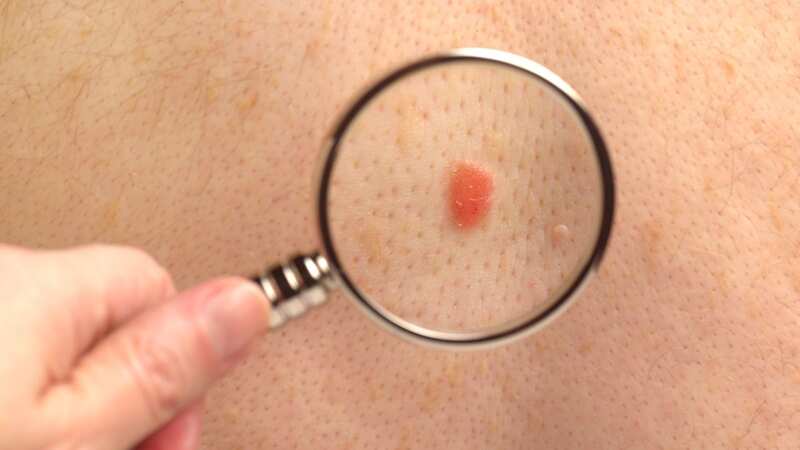Easy ABCDE method to check for moles - and identify skin cancer

There are around 16,744 new cases of melanoma skin cancer in the UK each year - and more than 2,000 annual deaths.
However, survival rate for the disease is much higher than other cancers (around 87 per cent) which means getting an early diagnosis is vital. Many of us know that over exposure to UV light from the sun can increase our risk of moles becoming cancerous - which is why it's important to wear SPF and stay in the shade whenever possible.
The NHS advises avoiding the sun during its strongest hours (11am-3pm) and covering skin with clothes whilst regularly re-applying high-factor sunscreen. It also urges Brits to avoid sunlamps or sunbeds, which use UV light to tan the skin.
But how can you tell the difference between a harmless mole and a potentially cancerous one? One Dr has explained an easy method which could save your life.
Dr. Tim Woodman is the medical director at Bupa UK Insurance and a former NHS GP. He told HuffPost that skin cancer is 'easily treated' if detected early enough. To do so, he recommends employing the ABCDE checklist, which will identify signs your mole could be a melanoma.
 Teachers, civil servants and train drivers walk out in biggest strike in decade
Teachers, civil servants and train drivers walk out in biggest strike in decade
A: Asymmetry. If one side of your mole is different to the other.
B: Border irregularity. Look out for moles with 'uneven' edges.
C: Colour variability. Does your mole contain more than one colour, or has it recently changed in colour?
D: Diameter. Flag any moles that are bigger than 6mm across to your Doctor.
E: Evolution. Has your mole changed in size or shape?
Want the latest health news, weight loss tips and fitness advice sent straight to your inbox? Sign up to our Health Newsletter
According to the NHS, it is perfectly normal for babies to born with moles and for new ones to appear. This is especially common in children and teens. Moles may also start to fade as you age and could darken in colour if you're pregnant.
However, it urges Brits to get their moles checked if they've changed in size, shape, colour, or turned itchy or painful. If you have a mole that's become inflamed and started to bleed or crust, or have a 'new or unusual' mark on your skin that's stayed for a few weeks - contact your GP.
If doctors think your mole is melanoma - you will be referred to a specialist, which should take around two weeks. Melanoma moles can be removed with surgery, especially when found early. If you or a loved one is worried about skin cancer, check out these resources.
Read more similar news:
Comments:
comments powered by Disqus

































